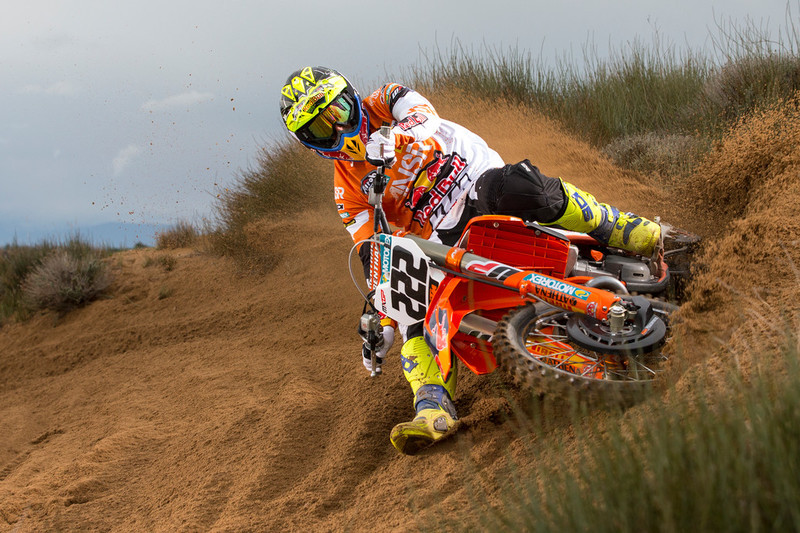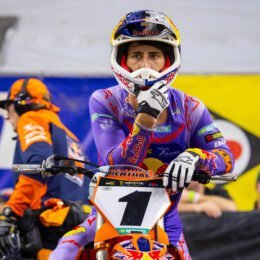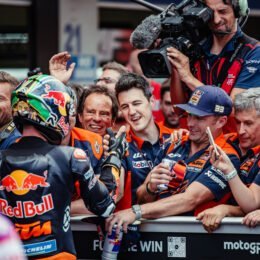“A pure Motocross bike …” talking about the factory KTM 450 SX-F
When Tony Cairoli crossed the finish line at the Dutch Grand Prix earlier this month he completed the set for the KTM 450 SX-F: AMA Supercross, Motocross and now the MXGP title. We asked one of the technicians at the forefront of the bike’s development in Grand Prix about the journey …
MX2 Team Manager and technical overseer of the Red Bull KTM Factory Racing Team Dirk Gruebel looks like a man who can handle a 450. The tall German places a large hand on the throttle of Jeffrey Herlings’ #84 race bike; the motorcycle that won five of the last six rounds of the 2017 MXGP series. It is identical to the #222 machine, ten meters away in the race awning that carried Cairoli to a ninth career crown this season – the first for the model after the Sicilian posted five world championships in a row with the KTM 350 SX-F.
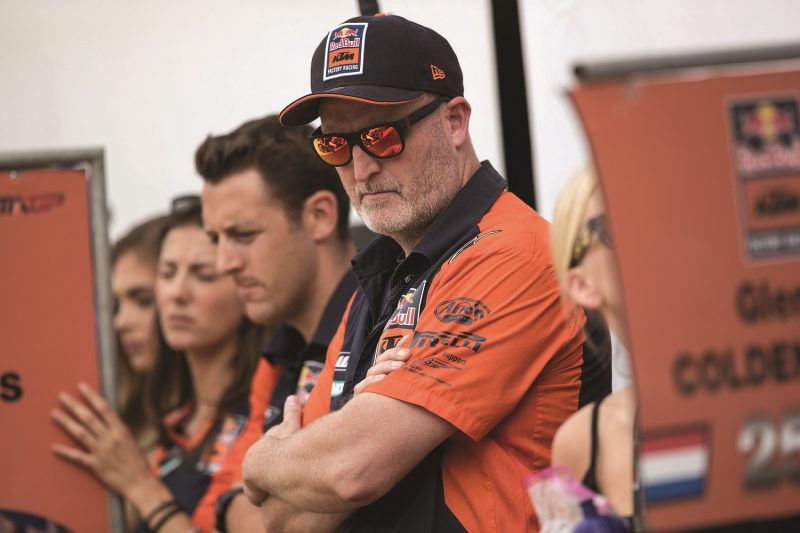
Dirk Gruebel (GER) Ernée (FRA) 2017
We are standing and talking under the Red Bull awning at the Pays de Montbeliard Grand Prix, the last stop on a long 2017 FIM trail. We want to know more about the technology next to us that has taken a total of twenty-five podium finishes and twelve wins from nineteen rounds. The bike has become the reference for the class in the hands of the Sicilian, the Dutchman and fellow countryman Glenn Coldenhoff through the rapid starts and consistent rate of high performance. The only shaky moment in the victorious campaign came when a stone in Sweden popped Herlings’ chain free.
From a questionable genesis (although Steve Ramon used an early version of the KTM 450 SX-F to claim the very first MXGP/MX1 moto at Zolder back in 2004) to top level Motocross and Supercross dominance, it has been quite a trip for the bike that was once in danger of being overshadowed by the 350. In his time at the factory Gruebel has been well placed to see and chart the adventure …
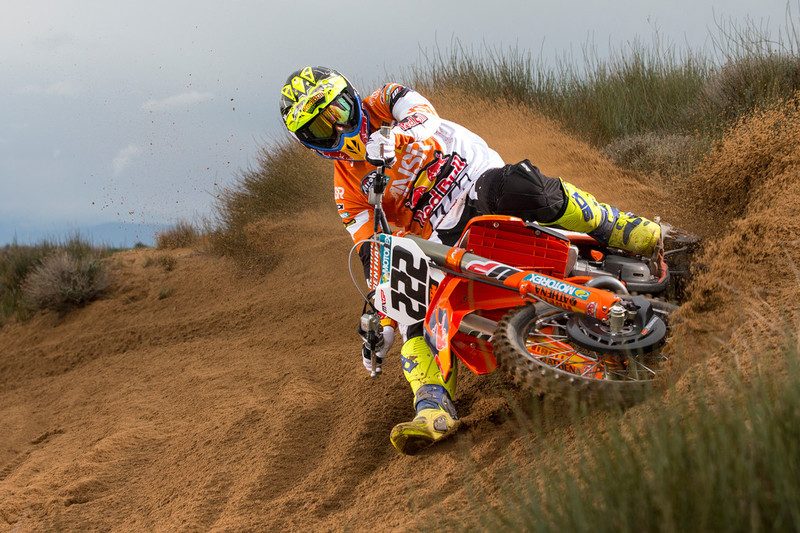
Tony Cairoli (ITA) KTM 450 SX-F 2017
Dirk, how would you evaluate the state and competitiveness of this bike we are looking at?
“The overall package is pretty good. When we started it was a bit rough because Tony came from a 350 and didn’t have that much experience in terms of how to set it up with the power, so it took us a while but then he got hurt and wasn’t fit. It took longer than expected but last winter we had a good test session and he felt comfortable on it. Jeffrey then joined in and, of course, was brand new to it. We invested much more work than we did the year before where we couldn’t really start on the right foot.”
In terms of architecture, is it a relatively simple bike? If you compare it to something like the Honda for example …
“Ours is a pure Motocross bike. Honda are transforming theirs into high-tech toys with lots of sensors and electronics. We have also started that but it takes its time and we don’t have as much experience as Honda coming from the road race side. Of course, we have also started that project [MotoGP]! Which helps us in terms of electronics but there is still a long way to go and I don’t know how much of it you can really implement in offroad. It is a question mark. People have been trying for a while and we have also seen the Honda doing some weird stuff and I remember the crash with [Gautier] Paulin in Mexico where nobody could quite figure out how it happened. It [electronics] still has a chink in offroad because nobody knows how water and changing lines and terrain can have an influence. It is a different playground to asphalt. For sure we need to step things up a bit but we are in a good way and I think we have one of the best packages out there.”
The 350 wasn’t changed much over the years for Tony. How much work has gone into the current 450 since the major revision that took Ryan Dungey to a lot of success?
“You can compare Tony’s bike and Dungey’s; they are quite similar. The suspension is very different if you look at the Supercross and outdoor setups … but the geometry and the hardware is the same.”

Ryan Dungey (USA) KTM 450 SX-F 2017
Going back to 2006 and the Tortelli/Pichon era and two years before that when Steve Ramon won the first ever MXGP (then MX1) moto on the KTM 450 SX-F: is that bike a world away from what we see now?
“Totally. That bike back then was not the best 450 [they made]. The models afterwards received much more effort in terms of building a pure Motocross bike. That one was like the twin brother of the Enduro bike when you looked at the frame and the geometry. We had different concepts and views of things at that time. We were running PDS and nobody had the same system. It worked in its own way but it was more difficult to set up and some riders loved the PDS – like Max Nagl and he still does – but there were more possibilities with the link bike and it was more forgiving on certain tracks.”
What are the strengths of the SX-F now?
“I believe the guys would say it is a light and nimble ride. It looks like the chassis offers some comfort and trust. Engine-wise we have tried to make smooth power with a wide, useable band but everybody can do that now and we just move it around to where we want to have it. I think we have found a good package with it all together. It took a while until the guys knew what they wanted and how to handle it but now it is there.”
Tony said at Glen Helen at the end of 2015 that he only came back to test and was working on electronics and chassis so that area must have been work in progress for quite a while …
“We were trying a holeshot device – that is now even on stock bikes – but to be honest he doesn’t use it. He just uses a normal setup. I think it helps to a certain point but if you are a good starter like Tony is then there was always something he didn’t like about the device. Some guys are better at judging it themselves. I’m not 100% convinced about the electronics out there at the moment and that is why we have less on the bike compared to some Japanese companies.”
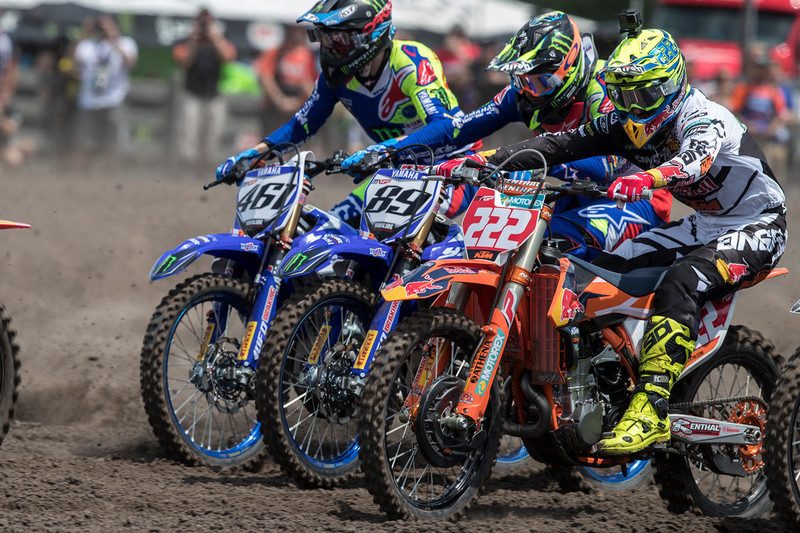
Tony Cairoli (ITA) KTM 450 SX-F Charlotte (USA) 2017
People are always working for those marginal gains, so what for next year? Small tweaks?
“[smiles] No. Even with a 1-2 in the championship then ‘after the race is just before the race’. Next season will come around fast and we need to make the same effort that we do every year. Winter will be short.”
Even though you’ve led the way since round six and Jeffrey has been so strong in the second part of the season do you still have prototype parts coming through?
“We have ideas and we put them out there and sort them out with the riders. If they have a benefit from them then we’ll use it. Development does not stop.”
With the championship won in MXGP it fully closes the story of the KTM 350 SX-F: a bike that was supposed to be the answer to the power of the 450s. Was it the right bike at the right time but now the 450s have evolved?
“It was the right bike at the right time but also the tracks have changed. We had some influences when [Ryan] Villopoto came over with bigger jumps and it was tougher to clear them on a good level with the 350 because it lacked that little extra torque and that was where the struggle started a bit. Tony changed his mind and also said that tracks with big uphills – like St Jean [D’Angely in France] for example and Matterley Basin that was fast with big quad jumps – were even harder on the 350. Tracks are still changing now and the layout for me can be good but I also see some more obstacles like wall jumps. We went faster and higher but now we try to break the rhythm with these jumps; these are sections more for Supercross in my opinion. We are not talking about super-high-powered 450s any more. They are softer, more manageable and have come a long way in a short time.”
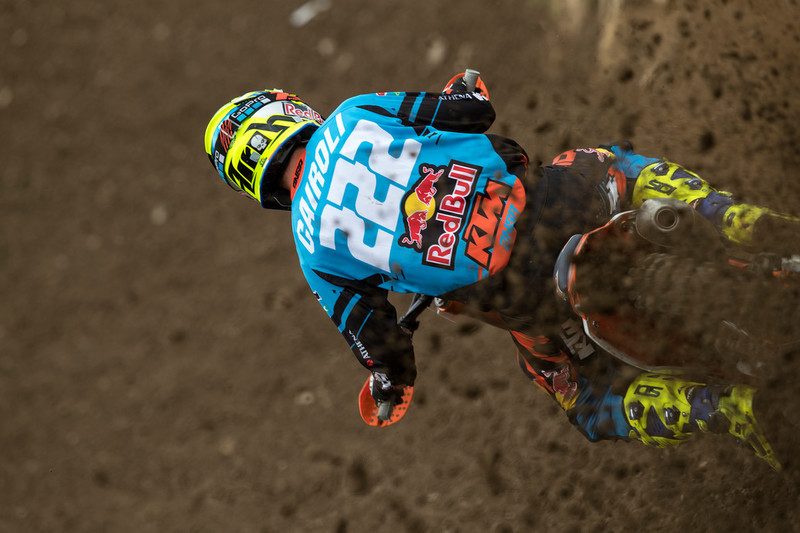
Tony Cairoli (ITA) KTM 450 SX-F Loket (CZE) 2017
Photos: KTM

